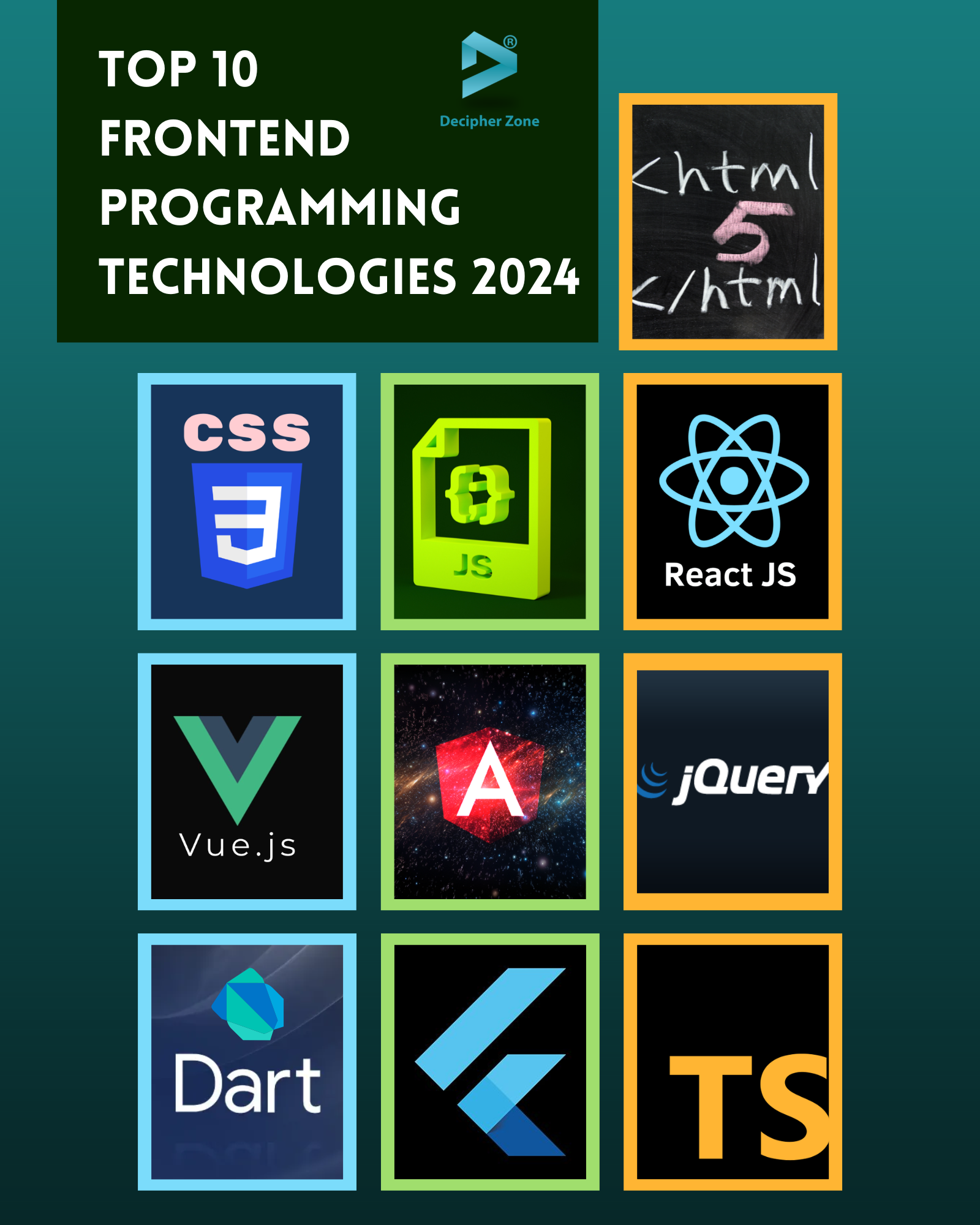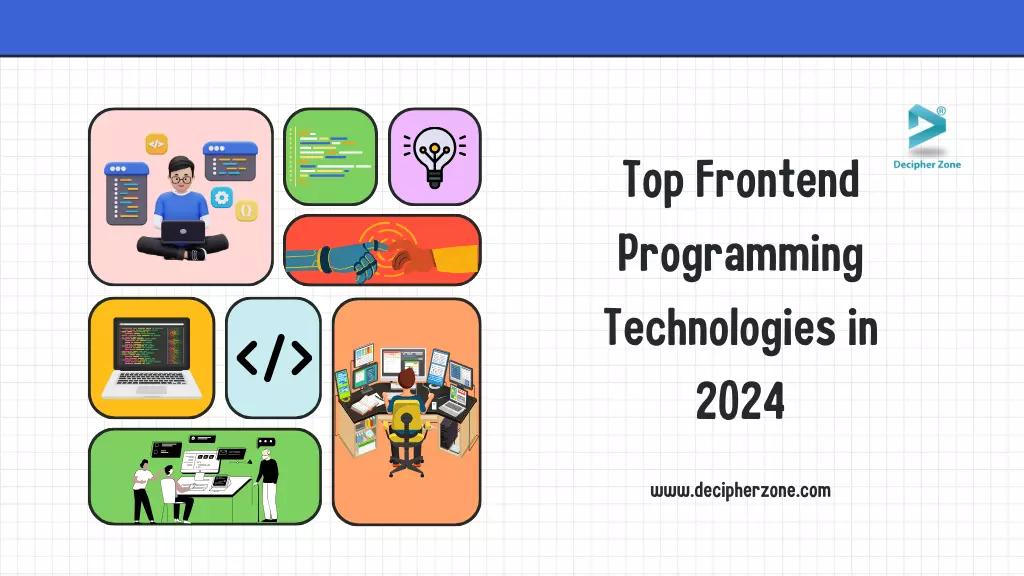In simpler terms, Front-End development refers to the web page’s visual and interactive aspects, including the layout, design, navigation, and user experience. It is responsible for creating an engaging and intuitive interface that allows users to interact seamlessly with a web application or software program.
Front-end development plays a vital role in the software development process. It is the part of software or web solutions that end-users interact with without understanding the underlying programming process occurring in the backend.
That being said, in today’s blog, if you want to build your career as a front-end developer or hire a front-end developer who can develop an interactive and eye-catching Front-End for the application, we will cover the top front-end programming languages to choose from.
But before getting started, let’s understand what front-end programming is.
What is Front-End Programming?
The process of creating interfaces that allow users to interact with software or websites is known as front-end programming. It involves web technologies such as HTML, CSS, and JavaScript to write web page code that designs and implements the style, layout, and functionality. The primary goal of front-end developers is to ensure that users have a smooth, intuitive, and visually appealing experience across different devices and browsers.
They collaborate with designers and backend developers to integrate Front-End components with backend systems and databases, ultimately creating a functional and seamless application for end users.
Read: Best Tech Stack for Web App Development
10 Top Front-End Programming Technologies You Must Know in 2024
Here is the list of the top 10 front-end programming technologies that you will trend in 2024.
-
HTML5
-
CSS
-
JavaScript
-
React
-
Vue
-
Angular
-
jQuery
-
Dart
-
Flutter
-
TypeScript
Building an impressive and easy-to-use front-end for the web requires you to choose the right front-end development technologies that adhere to your requirements.
1. HTML5
HyperText Markup Language (HTML) has been around for more than three decades. It is the standard markup language that is used for displaying documents designed for web browsers. HTML helps developers define the structure and content for the web page. The latest version of HTML is HTML5. It makes code easier to read, reduces the HTML, CSS, and JS overlapping, supports multimedia without plugins, and promotes design responsiveness.
Why Choose HTML5?
-
Cross-browser compatibility
-
Offline browsing ability
-
Higher accessibility
-
Write cleaner code
-
Semantic elements
-
Responsive design
Read: What is Web Scraping?
2. CSS
The Cascading Style Sheet (CSS) has been utilized for designing HTML and XML documents for more than 20 years. It was created by the World Wide Web Consortium (W3C) and offers more control and flexibility to developers. By incorporating relevant CSS in a separate .css file, developers can specify formatting for multiple pages.
Visual appearance is not the only area CSS is limited to - it also enables the creation of smooth transitions and animation for an enriched user experience. Also, the CSS Grid specification makes it easier to design responsive, complex layouts.
Why Choose CSS?
-
Style customization
-
Reusable Styles
-
Smooth Transitions and Animations
-
Concern Separation
-
Extensibility & Flexibility
Read: How to Hire A Dedicated Team of Frontend Developers
3. JavaScript
JavaScript (JS) is a programming language used by more than 98.8% of websites on the front-end. Together with HTML and CSS, it is referred to as the language of the web. It is a powerful language that allows developers to add interactivity to web pages. JS is also versatile, flexible, relatively compact, and just-in-time compiled, which means it can be used to define the behavior of web pages.
It can communicate with the backend to send and receive data, validate user input, and perform other functions. With the dynamism and versatility of JS, developers can create complex and feature-rich web applications.
Why Choose JavaScript?
-
Client-Side Architecture
-
Multiple language support
-
Robust design capabilities
-
Better Security
-
Versatility and Compatibility
-
Rich Libraries and Ecosystems
-
Event Handling
-
Asynchronous Programming
-
DOM manipulation
Read: Top 10 Best Javascript Frameworks
4. React
React is a JavaScript library that is open-source and is used by developers to create web and native user interfaces. It is based on components and handles the view layer of the application by thoroughly executing its rendering. With React, developers can create single-page, server-side, or mobile applications, using additional frameworks such as Next.js.
React makes it easy to create encapsulated components that manage their state, which makes creating complex and interactive UIs seamless.
Why Choose React?
-
Declarative
-
Component-based
-
Prompt Performance
-
Scalability
-
Fast Learning Curve
-
Simple and Lightweight
5. Vue
Vue.js is another JS, open-source, model-view-view model (MVVM) framework written in typescript. It is performant, approachable, and versatile, allowing rich web user interface creation. Vue.js can be used in small or large-scale projects as well as in existing projects depending on the requirements.
Some of the areas where Vue.js is popularly used by developers are single-page applications, static HTML pages, web components, server-side rendering, static site rendering, webGL, terminal, and desktop.
Why Choose Vue.js?
-
Simplicity
-
Ease of Use
-
Reusability
-
Faster Development
-
Flexibility
-
DOM rendering
-
Optimized Rendering Algorithms
Read: Top 9 Best Software Development Models

6. Angular
Angular is a free web application development framework that is open-source and based on TypeScript. It is maintained by Google's Angular team and its stable version was released on February 14th, 2024. Angular is versatile and can be used for projects of any size. It follows the Model-View-Controller (MVC) pattern and offers advanced features such as two-way binding, dependency injection, and strong testing capabilities.
Why Choose Angular?
-
Component-based
-
Two-way data binding
-
Streamlined MVC
-
Large Community Support
-
Easy-to-Learn
Read: Angular vs React
7. jQuery
When it comes to simplifying DOM manipulation and tree traversal in HTML, jQuery is a popular choice amongst developers. Not only does it make these tasks easier, but it also offers support for CSS animations, event handling, and Ajax. Despite being a relatively small library, jQuery is fast and packed with useful features and APIs, making it a valuable tool for cross-browser development.
Why Choose jQuery?
-
Cross-platform compatibility
-
Rich features
-
Simple syntax
-
Easy-to-use APIs
-
Event handling
-
CSS animations
-
DOM manipulation
Read: Top 15 Frameworks for Web App Development
8. Dart
Dart is a modern, open-source programming language that is designed to be used for developing high-performance applications across multiple platforms, including desktop, web, and mobile. Dart is optimized for client-side development and is increasingly popular among developers because of its ability to create fast, efficient code that can be compiled into native code.
This means that Dart code can run natively on the hardware, ensuring better performance, reliability, and security for end-users. Additionally, Dart is an easy-to-learn language that offers features such as garbage collection, asynchronous programming, and easy-to-read syntax, making it a great choice for both beginner and experienced developers.
Why Choose Dart?
-
Multi-platform development
-
Flexible runtime
-
Arrow Syntax
-
Async calls
-
Type Safe
-
Rich Set of Libraries
-
Runtime checks
9. Flutter
Flutter is an open-source, UI development kit developed by Google that is used for cross-platform apps from a single codebase. With Flutter, developers can build natively compiled, interactive, multiplatform applications. It also comes with in-built testing and development tools that in return help developers develop high-quality app code.
Why Choose Flutter?
-
Single Codebase for cross-platform app development
-
Powerful community support
-
Reduced time to development
-
Hote Reload Feature
-
Better Time-to-Market
-
Native-like Performance
10. TypeScript
TypeScript is a front-end programming language developed by Microsoft using JavaScript. It provides better code maintenance and faster bug detection, which leads to more secure and stable JS applications. This language is well-known for its enhanced development and strong typing experience, which increases the productivity of developers.
Why Choose TypeScript?
-
IDE and tooling support
-
Readability
-
Static Typing
-
Type Safety
-
Strong Community
-
Better Code Readability
-
ES6+ Compatibility
Read: Top 15 Frontend Development Tools
Conclusion
Designing dynamic web pages that seamlessly integrate with the backend of your web app or software can be a challenging task. To create an exceptional user experience, it's essential to know which languages and technologies are most suitable for the task.
Therefore, we have compiled this list of the top 10 front-end technologies that can help you choose the right tech to build an impressive web interface for your users. We hope this list will be of great benefit to you in your web development journey.
Also, if you are interested in frontend development but don’t know where to start, then get a free consultation for your business from us now!
FAQs: Front-End Programming Technologies
-
What is front-end development?
Front-end development refers to the web page’s visual and interactive aspects, including the layout, design, navigation, and user experience.
-
Which is the most popular Front-End language?
JavaScript is one of the most popular programming languages used for front-end development of web or software applications.
-
What is the cost of Front-End development?
Front-end development can cost anywhere from $1500 to $100,000, depending on the experience, number of developers, and time spent on the project.

